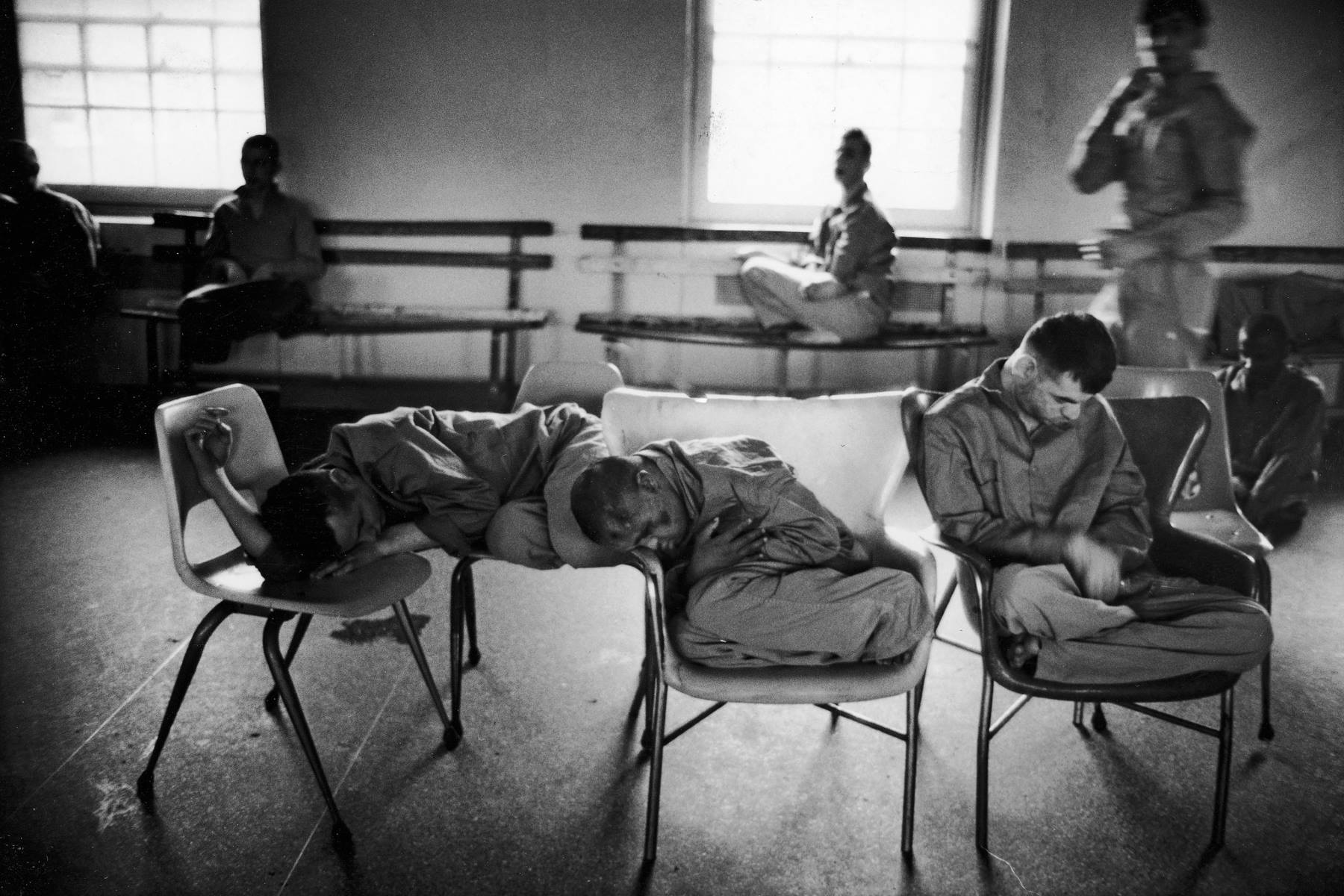
Insane asylums, also known as mental asylums or lunatic asylums, have a long and complex history. These institutions were once the primary places for confining and treating people with mental illnesses. From their early development in the late 18th century to their decline in the 20th century, asylums reflect changing societal attitudes towards mental health. They started as places of refuge but often became overcrowded and underfunded, leading to poor conditions. Despite high discharge rates, many patients faced grim outcomes. The rise and fall of these institutions highlight the ongoing challenges in providing humane and effective mental health care.
Key Takeaways:
- Insane asylums, now known as psychiatric hospitals, evolved from rudimentary care facilities to more structured institutions. They played a significant role in shaping our understanding of mental health care.
- The history of insane asylums highlights the need for continuous improvement in providing effective and humane care for the mentally ill. It serves as a reminder of the importance of addressing mental health care with compassion and understanding.
Early Development and Evolution
Insane asylums have a long and complex history. They evolved from rudimentary care facilities to more structured institutions over time. Here are some key facts about their early development and evolution:
-
Insane asylums began to develop in the late 18th century. The first asylum in the United States, the Eastern State Hospital, was established in 1773 in Williamsburg, Virginia.
-
The term "lunatic asylum" was commonly used in the 19th century. Over time, it evolved to "insane asylum" and eventually "mental asylum." Today, these institutions are more commonly referred to as psychiatric hospitals or mental health facilities.
-
By the mid-19th century, asylum populations had risen significantly. This increase was partly due to the growing awareness of mental illnesses and partly due to the decreasing tolerance of the mentally ill in the community.
-
Admission to an asylum was often certified by a medical officer and a local justice of the peace. This process ensured that only those deemed in need of institutional care were admitted. However, this system was not always reliable, leading to some individuals being wrongly committed.
Diagnostic Methods and Patient Classification
Understanding how patients were diagnosed and classified helps us grasp the operational practices of asylums. Here are some insights:
-
During the 19th century, diagnostic methods were relatively primitive. Conditions like mania, dementia, and melancholia were diagnosed based on behavioral observations rather than modern psychiatric criteria.
-
Patients were often classified as 'paupers' if they were publicly funded. This classification system reflected the economic status of the patients and influenced the level of care they received.
-
Contrary to popular belief, many patients were discharged from asylums. The high discharge rate at Bodmin Asylum, for example, mirrored that of other institutions like the Buckinghamshire Asylum, where half of those admitted were discharged within the first year.
-
Discharge from an asylum required the signature of a magistrate and could be initiated by the medical superintendent or at the request of the family.
Causes of Admission and Treatment Practices
The reasons for admission and the treatment practices in asylums reveal much about the conditions and care provided:
-
A substantial minority of patients were admitted due to 'organic' illnesses such as epilepsy, head injury, fever, or general paralysis. Some patients may have had acute medical illnesses with psychiatric symptoms as secondary effects.
-
The rising prevalence of syphilis was proposed as a reason for the increase in asylum populations. However, only 14 cases of syphilis-related general paralysis were recorded in Bodmin during the period studied.
-
Treatment practices in asylums were often minimal and ineffective. The focus was more on containment than on therapeutic care.
Decline of Asylums and Deinstitutionalization
By the early 20th century, the role and perception of asylums began to change. Here’s what happened:
-
By the early 20th century, insane asylums began to decline. As patients with incurable illnesses filled them, asylums became warehouses rather than therapeutic institutions.
-
The St. Louis Insane Asylum in 1900 exemplified the problems faced by many public mental hospitals. Despite efforts by its superintendent, Dr. Edward C. Runge, the facility faced financial troubles and overcrowding.
-
Staff at the St. Louis Insane Asylum collected detailed information on patients, including physical health, symptoms of insanity, suicidal and homicidal tendencies, and intemperate habits.
-
The trend of deinstitutionalization began in the mid-20th century. This movement aimed to shift care from institutional settings to community-based care.
Community-Based Care and Re-institutionalization
The shift from asylums to community-based care brought new challenges and developments:
-
Deinstitutionalization led to the development of community-based care services. These included residential care services like half-way houses, long-stay care homes, and supported hostels.
-
Despite deinstitutionalization efforts, some countries experienced a process of re-institutionalization. This was evident in increases in supported housing facilities, forensic psychiatric beds, and rising numbers in the prison population.
-
New Zealand initiated a reconciliation process in 2005 for ex-patients of state-run mental institutions. The initiative addressed poor reasons for admissions, unsanitary and overcrowded conditions, lack of communication, physical violence, and inadequate complaints mechanisms.
-
In several South American countries, the total number of beds in asylum-type institutions decreased. Instead, psychiatric inpatient units were established in general hospitals and other local settings.
Historical Context and Global Perspectives
The history of insane asylums is deeply intertwined with societal attitudes towards mental illness. Here are some global perspectives:
-
By the beginning of the 20th century, the number of "lunatics" housed in institutions in the UK had grown from a few thousand to about 100,000. This growth coincided with the development of psychiatry as a medical specialty.
-
The United States experienced two waves of deinstitutionalization. The first wave began in the 1950s and targeted individuals with mental illness. The second wave focused on those diagnosed with developmental disabilities.
-
In the United States, jails have become de facto mental institutions. Many inmates require mental health services, highlighting the need for better funding and expertise in providing mental health care within correctional facilities.
-
Private asylums, like Ticehurst Private Asylum, offered better care compared to public institutions. These asylums catered to the wealthy and provided more personalized and effective treatment.
-
Bethlem Hospital, one of the oldest psychiatric hospitals in the world, has a rich history dating back to 1247. It has evolved significantly over the centuries, reflecting changes in psychiatric care and societal attitudes towards mental illness.
Unique Care Systems and Reform Efforts
Different regions developed unique care systems and reform efforts to address mental health:
-
Scotland developed a unique care system for the mentally incapacitated during the long eighteenth century. The system included boarding-out insane patients, which provided a more community-based approach to care.
-
In North Wales, the care and treatment of the mentally ill were managed through a combination of institutional and community-based services.
-
In post-Famine Ireland, the care of the mentally ill was often inadequate. Insanity and the insane were stigmatized, leading to poor conditions in asylums.
-
The certification of insanity in 19th-century England and Wales was a complex process. It involved medical professionals and legal authorities, reflecting the dual nature of mental health care as both a medical and legal issue.
Patient Experiences and Legacy
The experiences of patients and the legacy of asylums provide valuable insights into the history of mental health care:
-
The history of psychiatric treatment includes the investigation of precedents for modern drug treatment. Early experiments with psychoactive substances laid the groundwork for contemporary pharmacological interventions in psychiatry.
-
In England, the provision of mental health services for people over 65 years of age has been a significant challenge. Historical studies highlight the need for specialized care tailored to the elderly population.
-
Patient letters from Royal Edinburgh Asylum provide valuable insights into the lives of patients during the late 19th and early 20th centuries. These letters reveal the emotional and psychological struggles faced by patients within institutional settings.
-
Life in asylums was often marked by hardship and neglect. Patients' letters and other historical records document the unsanitary conditions, overcrowding, and lack of communication that characterized many institutions.
-
Reform efforts aimed at improving asylum conditions and public attitudes towards mental illness were undertaken by figures like J. R. Lord and Montagu Lomax.
-
The stigma and prejudice surrounding mental illness have been persistent throughout history. Patients and former patients often faced continued emotional distress and trauma after their release from institutions.
-
The legacy of insane asylums serves as a reminder of the importance of addressing mental health care with compassion and understanding.
-
The historical development of these institutions underscores the need for continuous improvement in providing effective and humane care for the mentally ill.
-
From their early development to their eventual decline, these institutions have played a significant role in shaping our understanding of mental health and our approaches to treating it.
The Legacy of Insane Asylums
Insane asylums have a complicated history. They began in the late 18th century, aiming to provide care for the mentally ill. Over time, these institutions became overcrowded and underfunded, leading to poor conditions and minimal treatment. Many patients faced neglect and stigma, while some were wrongly committed. Despite high discharge rates, those who stayed long-term often had poor outcomes. The mid-20th century saw a shift towards deinstitutionalization, moving care to community-based services. However, this transition wasn't smooth, leading to re-institutionalization in jails and other facilities. Countries like New Zealand and regions like South America have made strides in improving mental health care. The history of asylums highlights the need for compassionate, effective mental health care. Understanding this legacy helps us improve current systems and ensure better treatment for those with mental illnesses.
Frequently Asked Questions
Was this page helpful?
Our commitment to delivering trustworthy and engaging content is at the heart of what we do. Each fact on our site is contributed by real users like you, bringing a wealth of diverse insights and information. To ensure the highest standards of accuracy and reliability, our dedicated editors meticulously review each submission. This process guarantees that the facts we share are not only fascinating but also credible. Trust in our commitment to quality and authenticity as you explore and learn with us.


